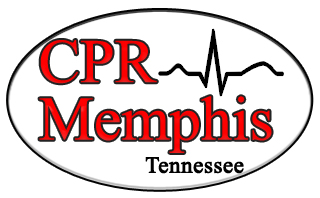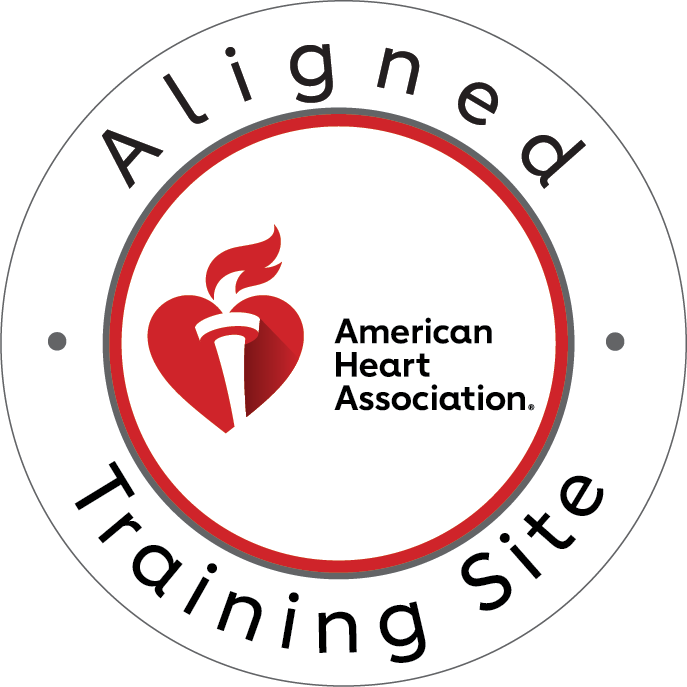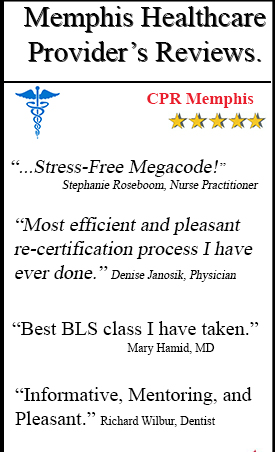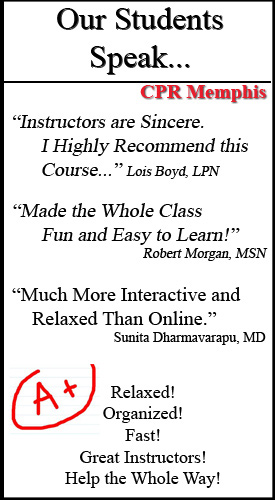Every second counts during a cardiac emergency. Whether you’re in a public place, at home, or on the job, knowing how to respond with CPR or an AED can mean the difference between life and death. Cardiac arrest is a leading cause of death worldwide, and immediate action is often the only chance of survival. This article examines the circumstances under which to use an AED versus CPR, highlights the key differences between the two, and emphasizes the importance of proper training and certification.
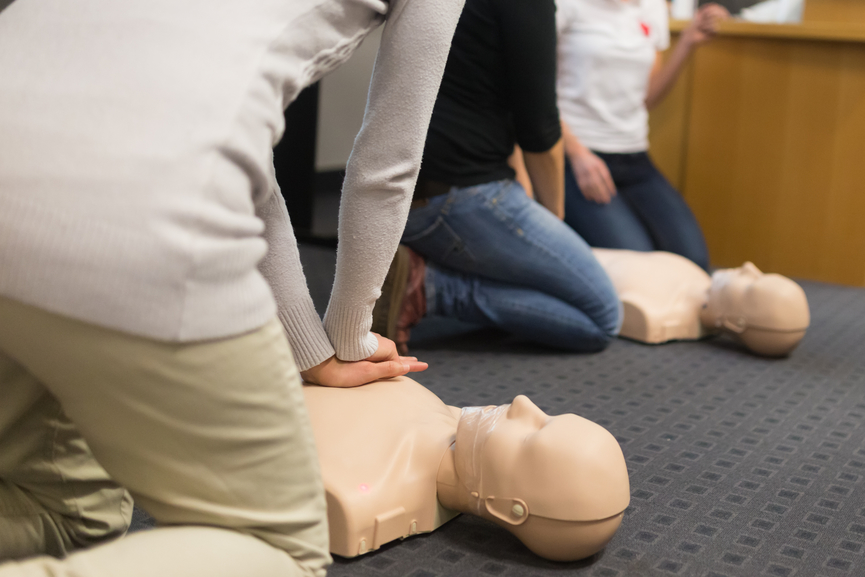
What is CPR and AED?
Understanding the basics of CPR and AED is the first step toward becoming prepared. CPR, or cardiopulmonary resuscitation, is a manual technique used to keep blood and oxygen circulating in the body when the heart stops beating. It involves chest compressions and, sometimes, rescue breaths. AED stands for automated external defibrillator—a portable device that analyzes heart rhythm and, if necessary, delivers a shock to restore a normal heartbeat. While both tools are critical in an emergency, they serve different purposes and should be used in conjunction with each other when possible.
Understanding CPR (Cardiopulmonary Resuscitation)
CPR is a life-saving procedure performed manually when the heart stops. Its primary goal is to keep blood and oxygen flowing to the brain and vital organs until medical help arrives. Chest compressions press on the heart to mimic its pumping action, while rescue breathing delivers oxygen directly into the lungs. In most cases, especially by laypeople, hands-only CPR—chest compressions without breaths—is recommended unless trained otherwise. CPR is typically the first step when someone collapses, is unresponsive, and isn’t breathing or breathing abnormally.
Understanding AED (Automated External Defibrillator)
An AED, on the other hand, is designed to treat sudden cardiac arrest by delivering a controlled electric shock to the heart. This shock can stop an irregular rhythm and allow the heart to restart in a normal pattern. AEDs can detect certain dangerous rhythms such as ventricular fibrillation (VF) or pulseless ventricular tachycardia (VT), both of which are considered “shockable.” The device offers voice prompts and visual cues, making it user-friendly even for those with minimal training. Built-in safety features ensure the AED only delivers a shock when it’s medically appropriate.
When Should You Use AED Instead of CPR?
Situations Requiring AED Use
Knowing when to use an AED instead of CPR—or when to use both—is crucial. AEDs are essential when a person collapses suddenly and is unresponsive with no pulse or normal breathing, indicating possible cardiac arrest due to a shockable rhythm. After powering on the AED and attaching the pads, the machine will assess the heart rhythm and advise if a shock is needed. If it says “shock advised,” rescuers should follow the prompts immediately.
Situations Requiring CPR
However, CPR remains critical in many other scenarios. If someone stops breathing due to a respiratory issue, such as drowning or overdose, CPR is the appropriate response. CPR is also necessary after an AED shock is delivered or if the AED advises “no shock,” but the person is still unresponsive and not breathing. In remote locations or settings without quick AED access, continuous CPR becomes even more vital to sustain life until professional responders arrive.
Assessment and Decision-Making Process
The decision-making process begins with assessing the victim. Check for responsiveness and normal breathing. If you’re trained, check for a pulse. If there is no sign of life, call for emergency services, begin CPR, and use an AED as soon as one becomes available. Always follow the AED’s instructions—they will guide you through each step, including when to pause for analysis and when to resume compressions.
What is the Difference Between CPR and CPR AED?
Traditional CPR
Traditional CPR focuses on chest compressions and rescue breathing, performed continuously until emergency personnel arrive. There’s no electrical intervention involved. In contrast, CPR with AED integration combines both approaches. While CPR provides ongoing circulation, the AED intermittently checks the heart rhythm and delivers shocks if needed. This combination dramatically improves survival chances in cardiac arrest cases.
CPR with AED Integration
Training plays a significant role in this integration. Basic CPR certification teaches foundational skills, while CPR/AED combination courses provide hands-on practice with real-life scenarios. This level of preparation ensures that responders can perform compressions while setting up the AED and transition smoothly between actions.
Do You Do CPR or Shock First?
One of the most frequently asked questions is whether to perform CPR or shock first. The answer depends on the situation, but generally follows a standardized sequence. First, check the scene and the victim’s responsiveness. Call emergency services and begin CPR immediately. If another person is present, have them locate and set up the AED. Place the pads on the victim’s chest while continuing compressions. Once the AED is ready, pause to allow it to analyze the heart rhythm. If a shock is advised, ensure no one is touching the victim and press the shock button when prompted. Resume CPR immediately after the shock.
What is an AED in CPR?
It’s essential to minimize interruptions to chest compressions, as consistent blood flow supports brain function and improves outcomes. In multiple rescuer scenarios, one person can continue CPR while the other manages the AED. In single-rescuer situations, every second counts, so transitions must be quick and deliberate. Keep performing CPR in two-minute cycles with periodic AED checks until professional help arrives.
Role of AED in Modern CPR
The role of an AED in CPR cannot be overstated. It’s not a replacement for CPR but a powerful addition. AEDs are part of the “chain of survival” promoted by the American Heart Association, which includes early recognition, early CPR, early defibrillation, and advanced medical care. AEDs provide accurate rhythm analysis, give clear instructions for CPR, and deliver lifesaving shocks when needed—all within minutes of a collapse.
Despite their effectiveness, AEDs have limitations. They won’t help in every cardiac arrest, especially if the rhythm is non-shockable, such as asystole. That’s why ongoing CPR remains crucial. AEDs also require maintenance—regular battery checks, pad replacements, and easy accessibility in public and private spaces.
Conclusion
Understanding when and why to use an AED versus CPR can mean the difference between life and death in an emergency. While CPR provides vital blood circulation through chest compressions and rescue breathing, an AED delivers the electrical shock needed to restore a normal heart rhythm during sudden cardiac arrest. These life-saving techniques work best when used together as part of the chain of survival, with CPR maintaining circulation until an AED becomes available or emergency medical services arrive.
The key takeaway is that both skills are essential, and knowing how to properly assess a situation and respond accordingly gives you the confidence to act when seconds count. Remember that good Samaritan laws protect those who provide emergency assistance in good faith, so don’t let fear of doing something wrong prevent you from taking action when someone’s life hangs in the balance.
Take Action Today: Get Certified and Save Lives
Don’t wait for an emergency to wish you had these critical skills. Every year, over 350,000 cardiac arrests occur outside of hospitals in the United States, and immediate CPR can double or triple survival rates. The time to learn is now, before you need these skills.
Ready to become a lifesaver? CPR Memphis, an American Heart Association training site, makes it easy to gain the confidence and skills you need. Our stress-free, hands-on classes ensure you’ll master both CPR techniques and AED operation through practical experience, not just theory.
Available Certifications:
- CPR and First Aid – Essential skills for everyone
- BLS for Healthcare Providers – Advanced techniques for medical professionals
- ACLS (Advanced Cardiovascular Life Support) – Critical care protocols
- PALS (Pediatric Advanced Life Support) – Specialized pediatric emergency care
Whether you’re seeking initial certification or need to renew your credentials, our expert instructors provide the best CPR training in the Memphis area. Classes are designed to build your skills progressively, ensuring you leave feeling prepared and confident to respond in real emergencies.
Don’t leave someone’s life to chance. Contact CPR Memphis today to enroll in a certification class. When an emergency strikes, you’ll be ready to make the difference between tragedy and survival. Your community needs more trained responders – become one of them.

